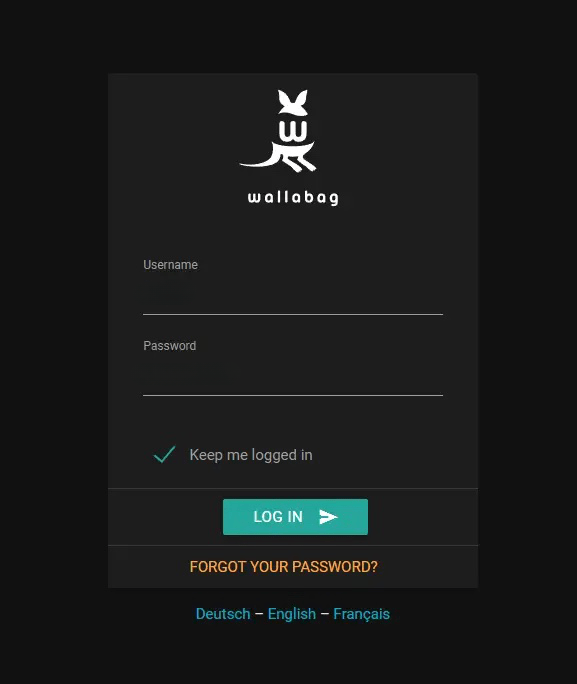How To Install Wallabag on Rocky Linux 9

In this tutorial, we will show you how to install Wallabag on Rocky Linux 9. Are you tired of losing track of all the articles, news, and blog posts you want to read? Do you find yourself bookmarking endless pages and then forgetting about them? If so, you may benefit from Wallabag, a self-hosted open-source application that allows you to save and organize articles for later reading.
This article assumes you have at least basic knowledge of Linux, know how to use the shell, and most importantly, you host your site on your own VPS. The installation is quite simple and assumes you are running in the root account, if not you may need to add ‘sudo‘ to the commands to get root privileges. I will show you the step-by-step installation of the Wallabag on Rocky Linux. 9.
Prerequisites
- A server running one of the following operating systems: Rocky Linux 9.
- It’s recommended that you use a fresh OS install to prevent any potential issues.
- SSH access to the server (or just open Terminal if you’re on a desktop).
- An active internet connection. You’ll need an internet connection to download the necessary packages and dependencies for Wallabag.
- A
non-root sudo useror access to theroot user. We recommend acting as anon-root sudo user, however, as you can harm your system if you’re not careful when acting as the root.
Install Wallabag on Rocky Linux 9
Step 1. The first step is to update your system to the latest version of the package list. To do so, run the following commands:
sudo dnf check-update sudo dnf install dnf-utils epel-release mod_ssl
Step 2. Installing Apache.
By default, Apache is available on the Rocky Linux 9 base repository. Now we install the latest version of Apache using dnf the command:
sudo dnf install httpd httpd-tools
You can start the httpd service and configure it to run on startup by entering the following commands:
sudo systemctl start httpd sudo systemctl enable httpd sudo systemctl status httpd
To make your pages available to the public, you will have to edit your firewall rules to allow HTTP and HTTPS requests on your web server by using the following commands:
sudo firewall-cmd --permanent --zone=public --add-service=http sudo firewall-cmd --permanent --zone=public --add-service=https sudo firewall-cmd --reload
For additional resources on installing Apache, read the post below:
Step 3. Installing PHP.
PHP is a popular scripting language that powers the dynamic content of millions of websites and apps. Now we run the commands below to install PHP 8 to your Rocky Linux:
sudo dnf epel-release sudo dnf install https://rpms.remirepo.net/enterprise/remi-release-9.rpm sudo dnf --disablerepo="*" --enablerepo="remi-safe" list available sudo dnf module enable php:remi-8.1
Once Remi PHP 8.1 module is enabled, you can now install PHP 8.1 and commonly used PHP extensions as follows:
sudo dnf install php php-cli php-mysqlnd php-opcache php-xml php-gd php-pdo php-bcmath php-intl php-mbstring php-json php-zip unzip
Check and verify the installed version:
php -v
For additional resources on installing PHP, read the post below:
Step 4. Installing MariaDB.
By default, MariaDB is available on the Rocky Linux 9 base repository. Simply install the MariaDB package by using the dnf command:
sudo dnf install mariadb-server mariadb
After the installation is completed, start the service of the Database server and then enable the same, so that it could start itself automatically with the system reboot:
sudo systemctl restart mariadb sudo systemctl status mariadb sudo systemctl enable mariadb
By default, MariaDB is not hardened. You can secure MariaDB using the mysql_secure_installation script. you should read and below each step carefully which will set a root password, remove anonymous users, disallow remote root login, and remove the test database and access to secure MariaDB:
mysql_secure_installation
First, log into the MariaDB shell with the following command:
mysql
Now we create a database and user for Wallabag with the following command:
MariaDB [(none)]> CREATE DATABASE wallabag_db; MariaDB [(none)]> CREATE USER 'wallabag_user'@'localhost' IDENTIFIED BY 'your-strong-password'; MariaDB [(none)]> GRANT ALL PRIVILEGES ON wallabag_db.* TO 'wallabag_user'@'localhost'; MariaDB [(none)]> FLUSH PRIVILEGES; MariaDB [(none)]> exit
For additional resources on installing MariaDB Database, read the post below:
Step 5. Installing Wallabag on Rocky Linux 9.
Now download the latest version of Wallabag from the official GitHub page using the following command:
cd /var/www/html sudo git clone https://github.com/wallabag/wallabag.git
Step 6. Configuring Apache.
We need to create a new virtual host configuration file for Wallabag:
nano /etc/httpd/conf.d/wallabag.conf
Add the following lines to the file:
<VirtualHost *:80>
ServerName your-domain.com
DocumentRoot /var/www/html/wallabag/web
<Directory /var/www/html/wallabag/web>
AllowOverride All
Order Allow,Deny
Allow from All
</Directory>
ErrorLog /var/log/httpd/wallabag_error.log
CustomLog /var/log/httpd/wallabag_access.log combined
</VirtualHost>
Save and close the file, then restart the Apache web server for the changes to take effect:
sudo systemctl restart httpd
Step 7. Configure Wallabag.
To configure Wallabag, we need to edit the parameters.yml file located in the /var/www/wallabag/app/config/ directory. We can edit the file using the following command:
nano /var/www/wallabag/app/config/parameters.yml
In the file, find the following lines:
# This file is auto-generated during the composer install parameters: database_driver: pdo_mysql database_host: 127.0.0.1 database_port: null database_name: wallabag_db database_user: wallabag_user database_password: your-strong-password secret: your_secret_here
Step 8. Initialize Wallabag.
To initialize Wallabag, we need to run the following commands in the /var/www/wallabag/ directory:
sudo php bin/console wallabag:install --env=prod sudo chown -R www-data:www-data /var/www/wallabag/
The first command will initialize Wallabag and set up the database schema. The second command will change the ownership of the Wallabag files to the Apache user, which is required for proper operation.
Step 9. Secure Wallabag with Let’s Encrypt SSL.
First, install the Certbot client using the following command below:
sudo dnf install certbot python3-certbot-apache
Then, run the following command to generate certificates with Apache:
sudo certbot --apache
Let’s Encrypt certificates have 90 days of validity, and it is highly advisable to renew the certificates before they expire. You can test automatic renewal for your certificates by running this command:
sudo certbot renew --dry-run
Step 10. Accessing Wallabag Web Interface.
Once successfully installed, now open your web browser and access the Wallabag web interface using the URL https://your-domain.com. You will be redirected to the following page:

Congratulations! You have successfully installed Wallabag. Thanks for using this tutorial for installing Wallabag with LAMP on your Rocky Linux 9 system. For additional help or useful information, we recommend you check the official Wallabag website.